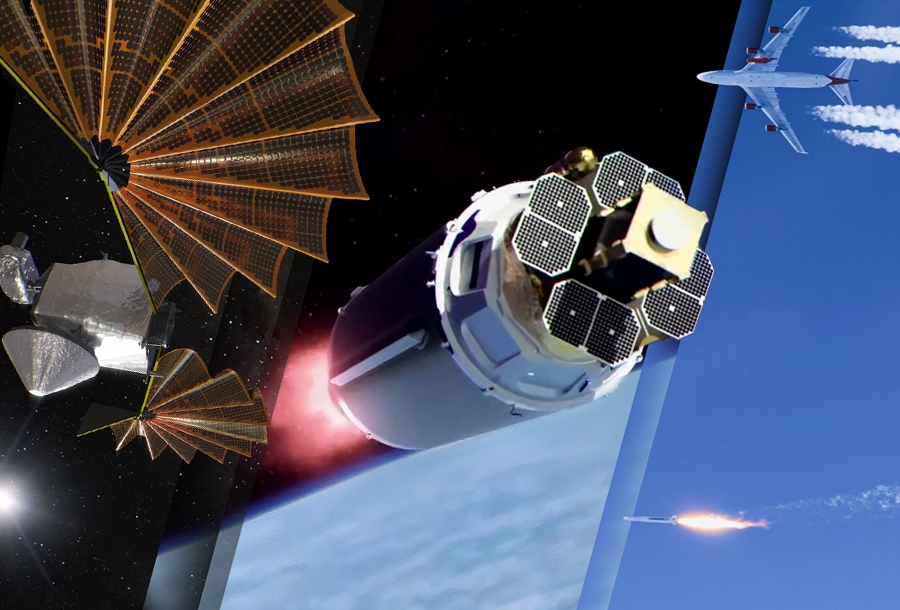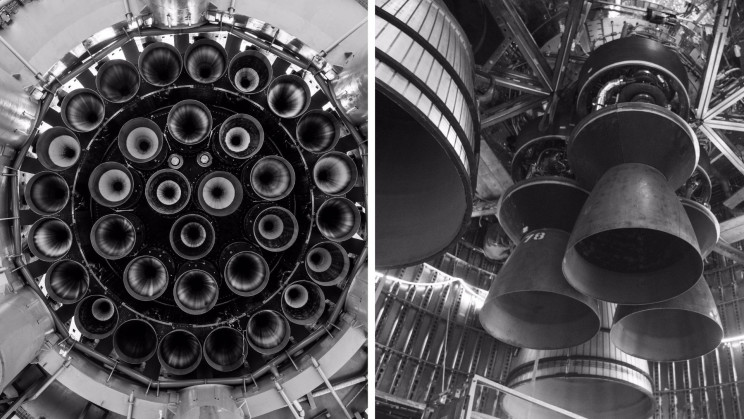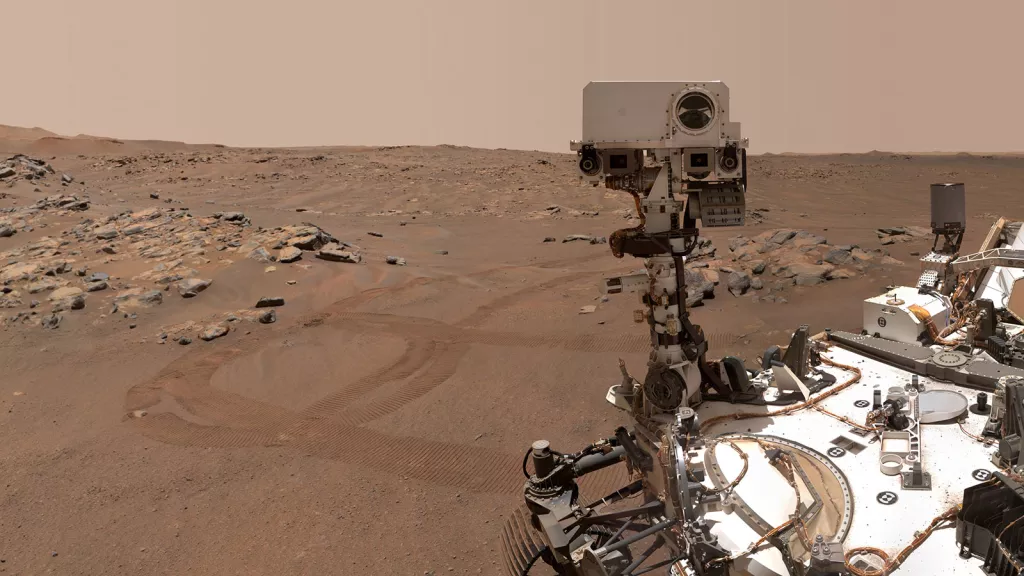Selection of the most interesting space news for the week: Hubble photographed an unusual merger of “multi-armed” galaxies. The CAPSTONE spacecraft left Earth orbit, and Virgin Orbit carried out its first successful night launch.

- NASA and Roscosmos are negotiating flights to the ISS
- CAPSTONE left Earth orbit
- NASA reported significant progress in the deployment of the Lucy solar array
- Image of Raptor engines on SpaceX’s Next Generation rocket
- NASA, SpaceX target new launch date for commercial cargo mission
- The US put experimental military satellites into orbit
- Virgin Orbit made first night launch
- African Satellites Linked to Economic Boom
- Perseverance rover is damaged
- Hubble Spies a Galactic Gem
NASA and Roscosmos are negotiating flights to the ISS
The US National Aeronautics and Space Administration (NASA) continues to work with Roscosmos on a seat barter agreement. In April, NASA International Space Station officials said they needed to have an agreement between NASA and Roscosmos finalized by late June in order to have a Russian cosmonaut, Anna Kikina, fly on the Crew-5 Crew Dragon mission in early September and an American astronaut, likely Frank Rubio, fly on the Soyuz MS-22 mission launching later in September.
“NASA continues working toward an agreement with Roscosmos whereby we would routinely fly integrated crews to the International Space Station aboard Soyuz and the commercial crew spacecraft,” NASA spokesperson Josh Finch told.
CAPSTONE left Earth orbit
The CAPSTONE spacecraft successfully left Earth orbit and headed for the Moon. This is stated in the official message published by NASA and Rocket Lab.
A bundle of the CAPSTONE satellite (Cislunar Autonomous Positioning System Technology Operations and Navigation Experiment) and the Photon universal platform was launched by the Electron rocket on June 28. In the following days, Photon made a number of course corrections, raising the apogee of the orbit to 1.3 million km. The decisive maneuver took place on July 4. In its course, a bundle of two vehicles reached the second cosmic speed, allowing them to leave the shackles of gravity forever. 20 minutes after the maneuver was completed, CAPSTONE separated from Photon, continuing its independent journey.
NASA reported significant progress in the deployment of the Lucy solar array
As a result of several operations, NASA specialists managed to almost completely deploy the jammed solar array of the Lucy probe. The mission team is increasingly confident that they will be able to solve the task and stabilize the device. The Lucy device receives energy from two round solar panels with a diameter of 7.3 m with a total surface area of over 80 m2. During the launch, they were in a folded state, their deployment began after the probe went into space and was carried out according to the fan principle.
Unfortunately, during the opening, one of the arrays could not snap. During the subsequent investigation, NASA engineers determined that it turned only 345°. The cause of the failure was the loss of tension in one of the cables of the array opening mechanism. According to engineers, from 50 to 100 cm of the cable remained unstrung.
Market News

Image of Raptor engines on SpaceX’s Next Generation rocket
SpaceX shared new photos on Twitter showing it has nearly finished installing the 39 upgraded Raptor engines it requires to take its fully reusable Starship rocket to orbit for the first time. The engines are being fitted onto a new Starship prototype called Ship 24 and a Super Heavy booster named Booster 7. If upcoming tests are successful, they will launch simultaneously into orbit sometime this summer.
NASA, SpaceX target new launch date for commercial cargo mission
NASA and SpaceX now are targeting no earlier than Thursday, July 14, for launch of the CRS-25 commercial resupply services mission to the International Space Station. The new target launch date supports ongoing Dragon spacecraft inspections as well as repair and replacement of any components that could have degraded by exposure to mono-methyl hydrazine (MMH) vapor found during testing in early June. In order to allow a more detailed off-vehicle inspection of the parachutes, the SpaceX team made the decision to replace the main parachutes on this spacecraft.
The US put experimental military satellites into orbit
The Atlas 5 rocket launched a payload into orbit for the US Space Forces as part of the USSF-12 mission. It consists of a new generation attack warning satellite and six secret experimental small satellites. The USD 1.1 billion USSF-12 mission involves placing military demonstration vehicles in orbit. It is known that the payload of the mission is being formed from the WFOV missile attack warning satellite and six small satellites united in a ring with a diameter of 5 meters.
Virgin Orbit made first night launch
Virgin Orbit has carried out its first successful night launch. During the Straight Up mission, it launched seven satellites into orbit for the US Space Force. The carrier plane Cosmic Girl (converted Boeing 747) took off from the Mojave Spaceport on the morning of July 2. The mission was successful. LauncherOne has successfully launched seven experimental spacecraft into a 500-kilometer orbit in contact with the US Space Forces. Among them are satellites designed to measure solar radiation, devices for testing GPS system components and cubesats designed to demonstrate the possibility of performing reconnaissance tasks.
African Satellites Linked to Economic Boom
Zimbabwe is set to launch its first satellite ZimSat-1 into orbit in July or August, weather permitting. The nanosatellite will be launched from the Japanese KIBO Module – Japan’s science module for the International Space Station (ISS). With ZimSat-1 in orbit, Zimbabwe will become the 14th African country to have a presence in space. According to this report in The Economist, 20 African countries now have space programmes.
Interesting

Perseverance rover is damaged
The Perseverance rover touched down on the Red Planet in February 2021 carrying, among other instruments, a weather station dubbed Mars Environmental Dynamics Analyzer (MEDA). That instrument includes two wind sensors that measure speed and direction, among several other sensors that provide weather metrics such as humidity, radiation and air temperature. Pebbles carried aloft by strong Red Planet gusts recently damaged one of the wind sensors, but MEDA can still keep track of wind at its landing area in Jezero Crater, albeit with decreased sensitivity.
Hubble Spies a Galactic Gem
This NASA/ESA Hubble Space Telescope observation has captured the galaxy CGCG 396-2, an unusual multi-armed galaxy merger which lies around 520 million light-years from Earth in the constellation Orion. This image is a gem from the Galaxy Zoo project, a citizen science project in which hundreds of thousands of volunteers classified galaxies to help scientists solve a problem of astronomical proportions — how to sort through the vast amounts of data generated by robotic telescopes. In a flocculent spiral galaxy, unlike galaxies with an ordered spiral structure, spiral “arms” are not continuous structures of the galaxy itself.
Follow us on Twitter to get the most interesting space news in time
https://twitter.com/ust_magazine
